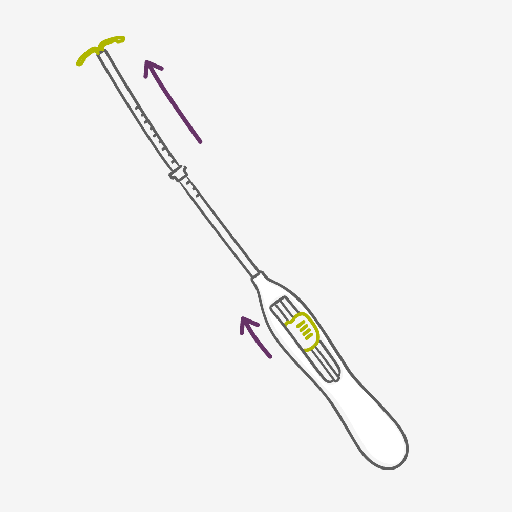HOW IT WORKS
WHAT IS IUS (INTRAUTERINE SYSTEM)
An IUS is a small, T-shaped plastic birth control device that's put into your womb (uterus) by a doctor or nurse.21
After consulting your doctor or healthcare professional, an IUS can be fitted at any moment in your life.
The IUS method is similar to the intrauterine device (IUD) method but instead of releasing copper like the IUD, it releases the hormone progestogen into the womb.
It thickens the cervical mucus, which makes it more difficult for sperm to move through the cervix, and thins the lining of the womb so an egg is less likely to be able to implant itself.
At 99.8% effectiveness, you’re about as protected as you possibly can be by a contraceptive method.1
It can be used by women who cannot use combined contraception (such as the combined pill) – for example, those who have migraines.21
*IUS : Intra-uterine system
*IUD : Intra-uterine device

HOW TO
An IUS can be fitted any time in your menstrual cycle, as long as you're not pregnant. It can also be fitted at any time in your life, from adolescence until menopause.
If it's fitted in the first 7 days of your cycle, you'll be protected against pregnancy straight away. If it's fitted at any other time, use additional contraception, such as condoms, for 7 days afterwards.
Before your IUS is fitted, a doctor or nurse will check inside your vagina to check the position and size of your womb.
Your IUS can be removed at any time by a doctor or nurse. If you're not having another IUS put in and do not want to become pregnant, use additional contraception, such as condoms, for 7 days before you have it removed.
It's possible to get pregnant as soon as the IUS has been taken out.21
PROS OF INTRAUTERINE SYSTEM (IUS)
- It lasts for 5 years, depending on the brand but, it can be taken out at any time by a doctor or nurse.21
- It's one of the most effective forms of birth control.21
- Heavy periods can become lighter and less painful.21
- It's not affected by other medicines.21
- It may be a good option if you cannot take the hormone estrogen, which is used in the combined contraceptive pill.21
- It can be used when breastfeeding.21
- It's possible to get pregnant as soon as the IUS has been taken out.21

CONS OF INTRAUTERINE SYSTEM (IUS)
- It requires a healthcare provider for insertion and removal.1
- Irregular bleeding and spotting can be common in the first 6 months of use.1
- Some women experience headaches, tenderness and acne after an IUS is fitted.21

FREQUENTLY ASKED QUESTIONS
Having an IUS fitted can be uncomfortable, but you can have a local anesthetic to help. Discuss this with a GP or nurse beforehand. You may also get period-type cramps afterwards, but painkillers can ease the cramps. Once an IUS is fitted, it'll need to be checked by a GP after 3 to 6 weeks to make sure everything is fine.21
*GP : General Practitioner
An IUD is a small T-shaped plastic and copper device that's put into your womb (uterus) by a doctor or nurse. It releases copper to stop you getting pregnant, and protects against pregnancy for between 5 and 10 years. It's sometimes called a "coil" or "copper coil".32
An IUS is a small, T-shaped plastic device that's put into your womb (uterus) by a doctor or nurse. It releases the hormone progestogen to stop you getting pregnant and lasts for 3 to 5 years, depending on the brand.21 When considering the IUS vs IUD method, talk to your doctor or healthcare provider to help define which option is more appropriate for you.
Hormonal IUDs (IUS) may cause frequent spotting, more days of bleeding, and heavier bleeding in the first months of use. Over time, the amount of menstrual bleeding and the length of your menstrual period usually decreases. Menstrual pain also usually decreases. For some women using a hormonal IUD, menstrual bleeding stops completely.37
Your periods can become lighter, shorter and less painful – they may stop completely after the first year of use.21
An IUS can be left in place for up to five years depending in the type. After this time, it will need to be replaced with a new device.21
It was found that there are no significant differences in weight change between users of the LNG-IUS when compared to copper IUD method users. Also, little evidence of weight gain was found when using progestin-only contraceptives. Mean gain was less than 2 kg for up to 12 months.
LNG-IUS : Lenvonorgestrel-releasing intra-uterine system
Six studies examined hormonal contraceptive use among women with depressive or bipolar disorders, none of which found that hormonal contraceptives negatively influenced either condition.






































